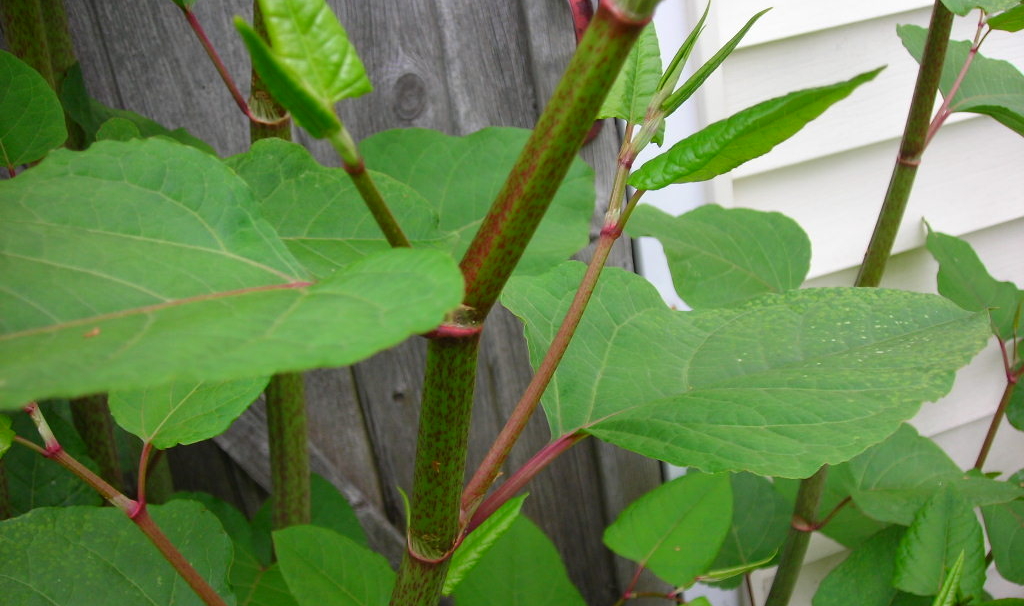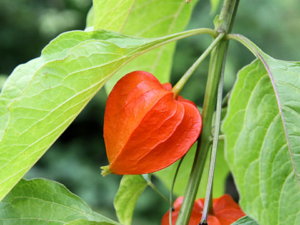GARDEN WORKS: 10 plants you never want in your garden space

Japanese Knotweed – one of ten plants you shouldn’t plant in your garden.
 by Emily Cates
by Emily Cates
No! Don’t do it! If you’re thinking of planting any of the plants in this article in your garden, think again before you make a mistake.
Though it’s certainly a lovely time to be outdoors working in our gardens, our toils could increase a not-so-lovely hundredfold as a consequence of just one indiscretion. This article is meant to prevent that. Read on to examine just ten blunders an unwise gardener could commit.
10. American Plum (Prunus americana). This wonderful tree with delicious fruits will oftentimes freely sucker from its roots and form thickets with occasional thorns. Who wants that in their garden? Plant plums where they can be mowed around, easily pruned, and thoroughly enjoyed.
9. Autumn Olive (and possibly other Elaeagnus spp. including Russian Olive). Shrubs in this family are oftentimes highly-touted as soil-building and edible landscaping plants. However, some of them are also known to be invasive. Mowing around them is an ineffective means of keeping them in check, as birds and other wildlife love the fruit and will spread the seeds. Some sources claim invasiveness is not a problem with this plant in our area, though from observing colonies of Russian Olive nearby in Winslow and China, I have seen first-hand how they can definitely get out of control. If you must have the fruits, then- instead of planting – make friends with someone who already grows it who doesn’t mind sharing.

Chinese Lantern
8. Chinese Lantern (Physalis alkekengi). These cute ornamentals can really take over. No need to plant them; if you’re looking for a few to put in floral arrangements, enough folks have them around to find a bunch someone is willing to part with.
7. Oriental Bittersweet (Celastrus orbiculatus). Don’t. Just don’t.
6. Japanese Knotweed (Fallopia japonica). I grew up with a colony of this intriguing bamboo-like plant in my yard. Thankfully it was contained enough in an out-of-the way spot, but other neighbors were not so fortunate. The super-villain of invasives, I have yet to see it eradicated successfully. (Please let me know if you have!) Though, I might add, knotweed is also regarded as a super-hero by those suffering from Lyme disease who claim to benefit from its medicinal properties. And though this invasive oftentimes forms monocultures and crowds out native plants, at least I can say the “bamboo forest” was a lot of fun to play in as a kid!
5. Hops (Humulus lupulus). I made the mistake of planting this vigorous vine beloved by brewmasters and herbalists in a raised garden bed one year. It took several years thereafter of meticulously digging up each rhizome fragment to get rid of it. Hops is a great plant if given its own space with something to climb on – preferably away from the garden.
4. Horseradish (Armoracia rusticana). It’s one of those plants that is beloved in the kitchen, but hated in the garden. Coexistence is possible, but for best results, plant in an area you can mow around.
3. Comfrey (Symphytum officinale). First, the pros: The plants are full of soil-building nutrients and make some of the best compost tea around. Comfrey likewise makes a good companion plant for orchards. Depending on the cultivar, it is also highly esteemed by herbalists in first-aid salves used externally. However, one must be fully aware of the cons: Comfrey has a lurid reputation for being invasive. Keep it far away from the garden, keep it mowed, and keep it harvested before it goes to seed. And never till or chop the roots, lest it take over
the planet!
2. Nettle (Urtica dioica). I have a love-hate relationship with this plant. While I thoroughly enjoy highly nutritious steamed nettle greens in the springtime and making cordage with the stalk fibers, oh how it stings! No matter how hard I try (with garden gloves, mind you), I just can’t seem to get rid of it. In the meantime, I try to focus on all the good qualities of nettle, and then kick myself every time I brush up against it in the blueberry patch.
1. Blackberry (Rubus spp.). Okay, here’s Number One on my list! Go ahead. Call me a dummy. I deserve it because years ago I planted a row of blackberries in the middle of my garden. What was I thinking?! Now every year since, I have the added task of pulling out multitudes of thorny canes that refuse to go away and jab at me through sturdy work clothes. Thankfully a lot of them have worked their way over to a spot next to the garden where they are tolerated. The original plants and their progeny seem to have slowed down slightly in areas where I persistently attack them with loppers and mowers. But to this very day I regret even liking the taste of blackberries. Let this be a lesson to save others from such pain!
Thanks for reading. If you know of other plants you would like to add to the list, feel free to send a comment on our website or Facebook page. Until next time, happy gardening!
Responsible journalism is hard work!
It is also expensive!
If you enjoy reading The Town Line and the good news we bring you each week, would you consider a donation to help us continue the work we’re doing?
The Town Line is a 501(c)(3) nonprofit private foundation, and all donations are tax deductible under the Internal Revenue Service code.
To help, please visit our online donation page or mail a check payable to The Town Line, PO Box 89, South China, ME 04358. Your contribution is appreciated!


Leave a Reply
Want to join the discussion?Feel free to contribute!